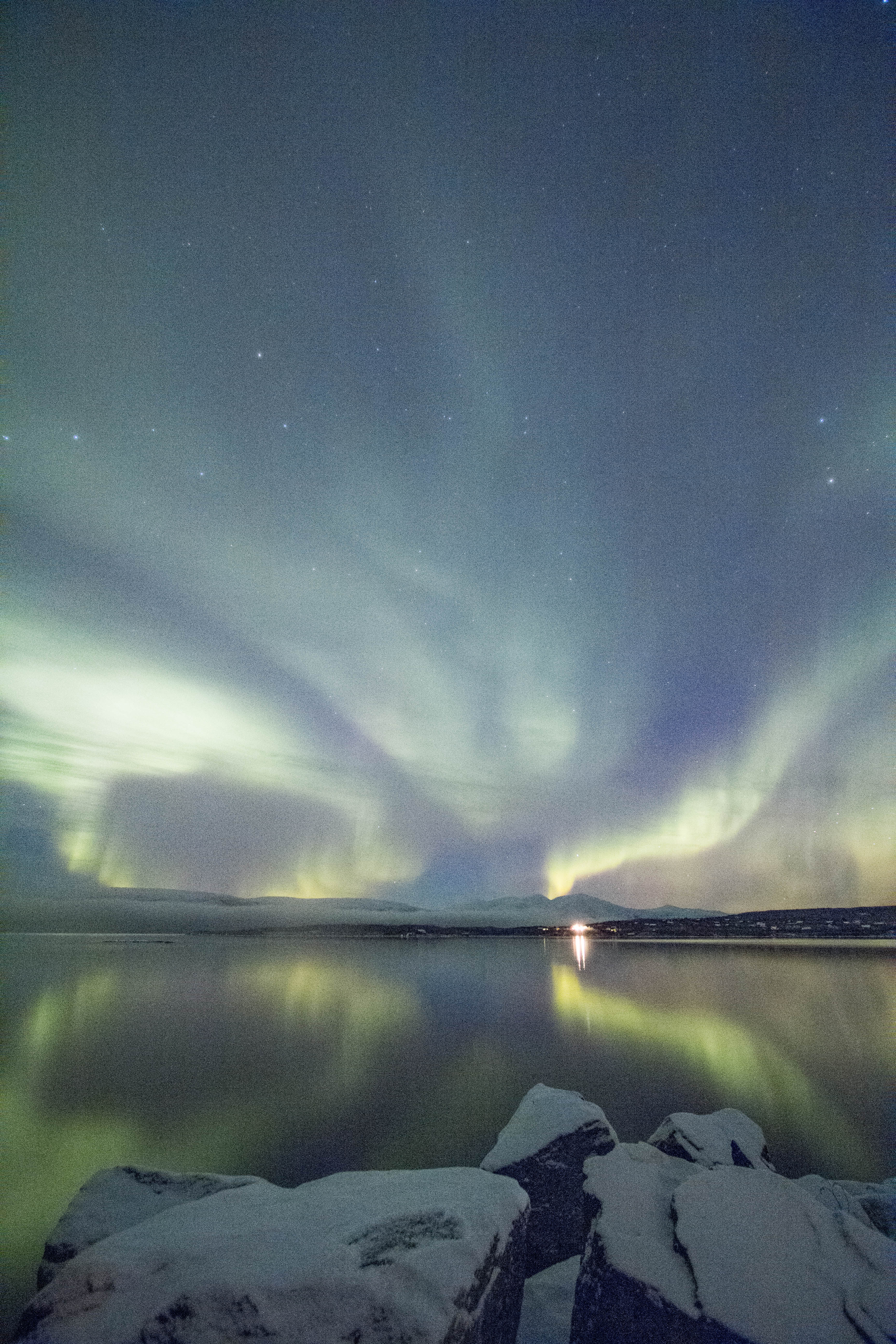
Aurora reflected in the waters of Lake Trondetraske, Sweden’s longest and deepest lake.
Abisko, Sweden
16 Nov 2015
EOS 60Da with EFS 10-22mm(10mm)
8 seconds, f/3.5, ISO 1600
previous | nightscapes index | next


Aurora reflected in the waters of Lake Trondetraske, Sweden’s longest and deepest lake.
Abisko, Sweden
16 Nov 2015
EOS 60Da with EFS 10-22mm(10mm)
8 seconds, f/3.5, ISO 1600
previous | nightscapes index | next
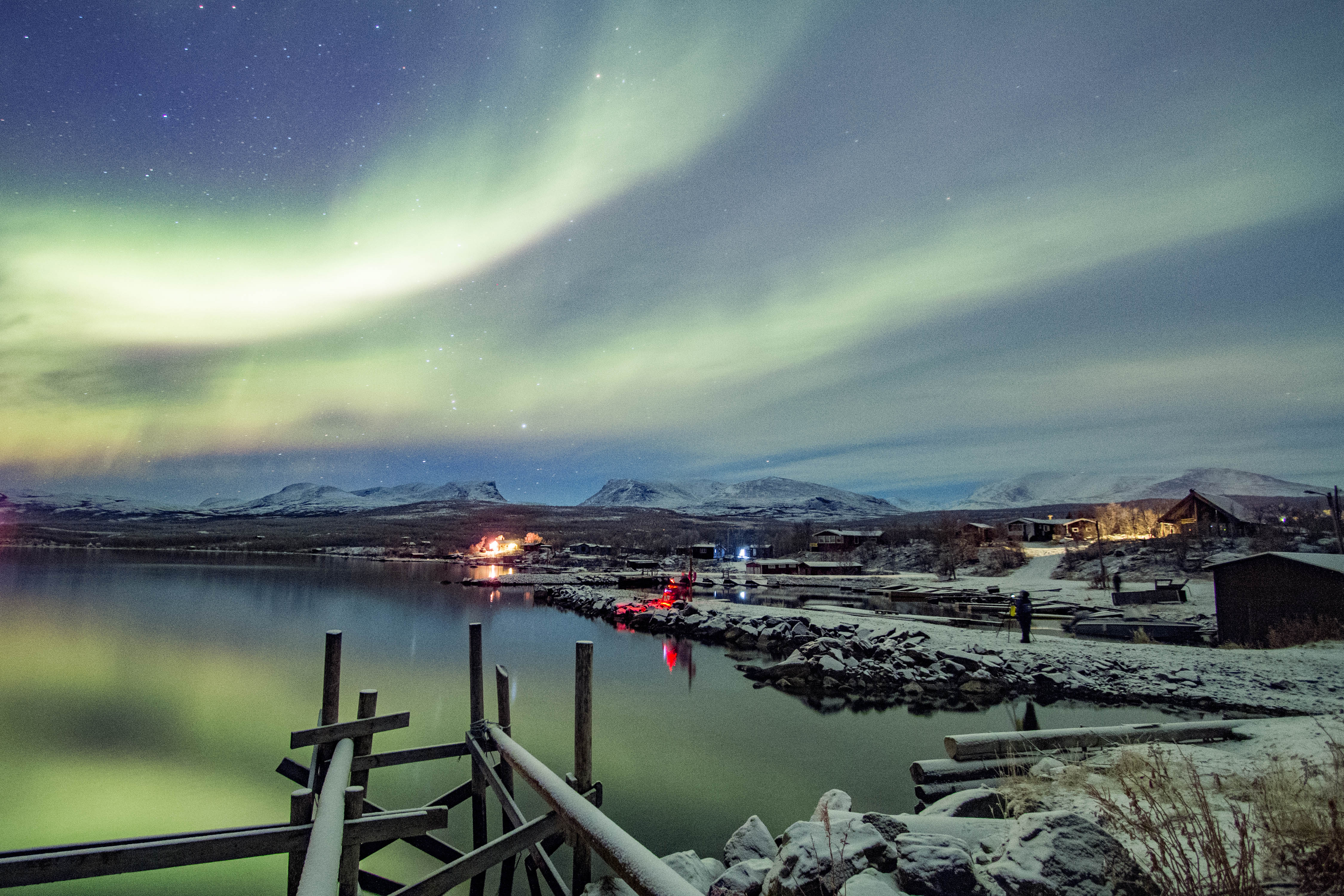
The view from the docks at the town of Abisko on Lake Trondetraske. The “Gates of Lapland” is seen in the distance as a notch in the wall of mountains.
Abisko, Sweden
16 Nov 2015
EOS 60Da with EFS 10-22mm(10mm)
30 seconds, f/4.5, ISO 1600
previous | nightscapes index | next
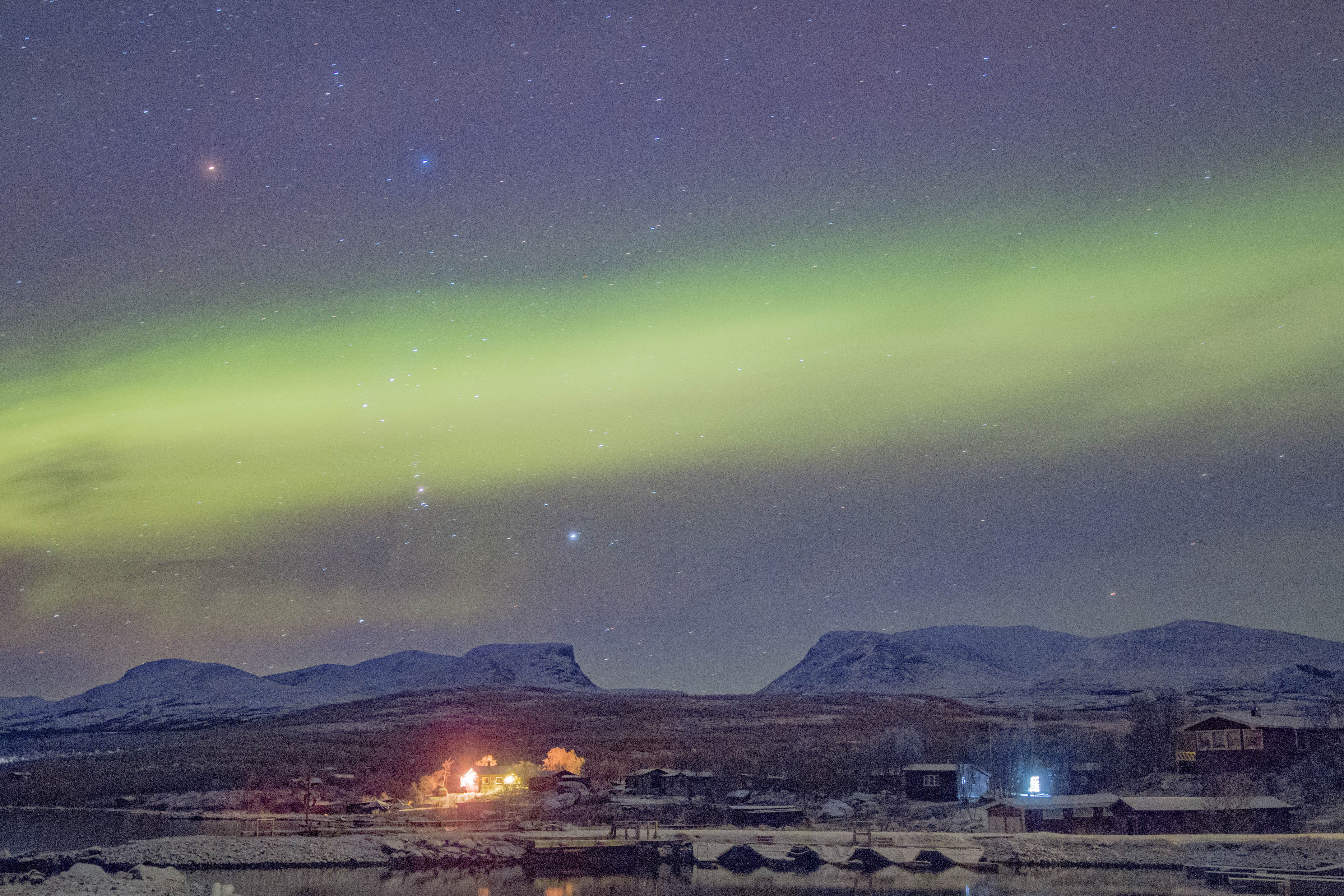
An auroral cloud covers the constellation Orion above the landmark gap in the mountains known as the “Gates of Lapland”
Abisko, Sweden
16 Nov 2015
EOS 60Da with EFS 10-22mm(10mm)
30 seconds, f/4.5, ISO 1600
previous | nightscapes index | next
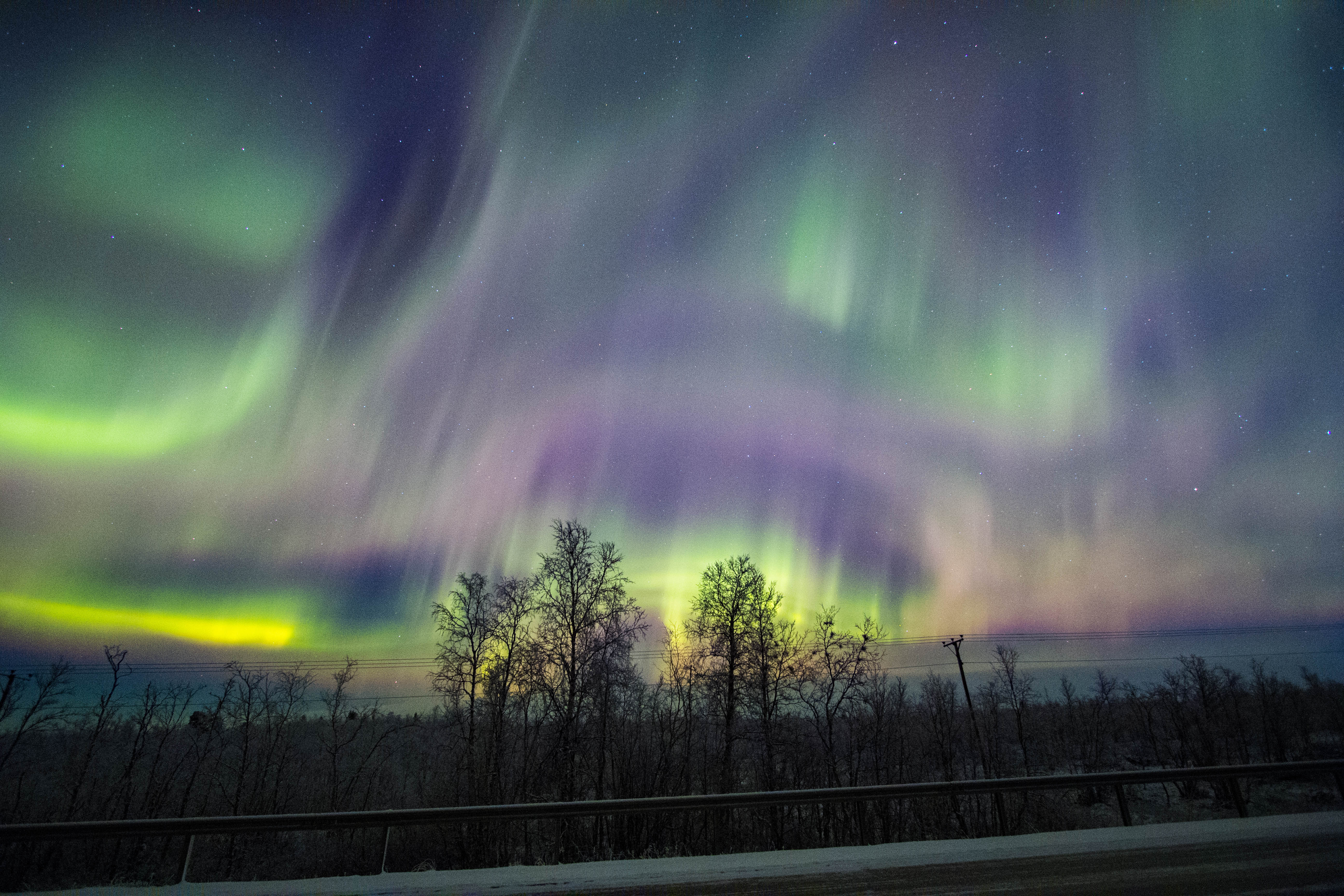
Green light from ionized oxygen dominates, but is accompanied by reds from ionized nitrogen. They follow complex fields that creates sheets and apparent loops of light.
Kiruna Sweden
16 Nov 2015
EOS 60Da with EFS 10-22mm(10mm)
8 seconds, f/3.5, ISO 1600
previous | nightscapes index | next
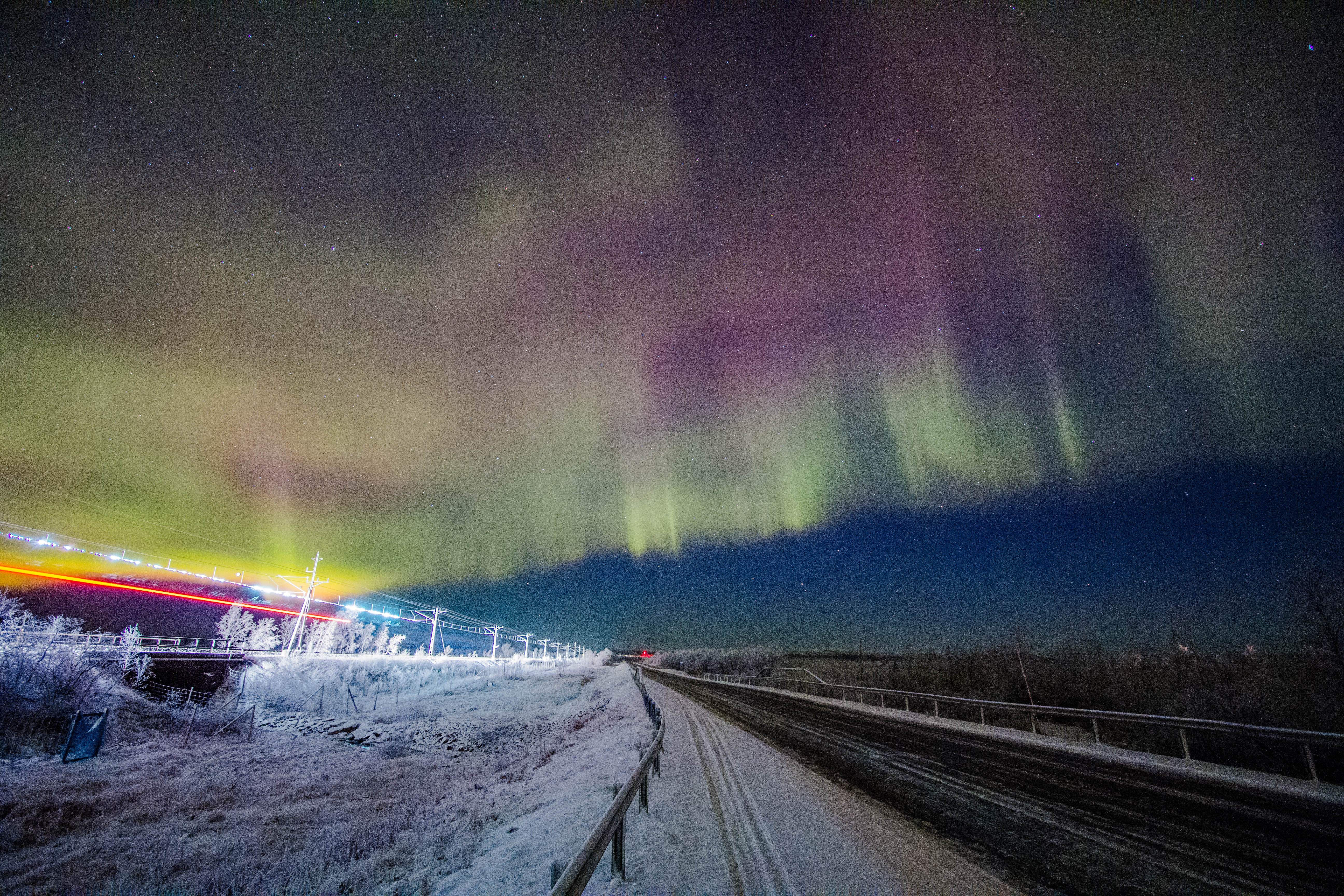
During this 8-second exposure, a train enters the view, its headlight illuminating the landscape. The train adds its own trails of light, including the arcs of its electrical contact with the overhead wire.
Kiruna Sweden
16 Nov 2015
EOS 60Da with EFS 10-22mm(10mm)
8 seconds, f/3.5, ISO 1600
previous | nightscapes index | next
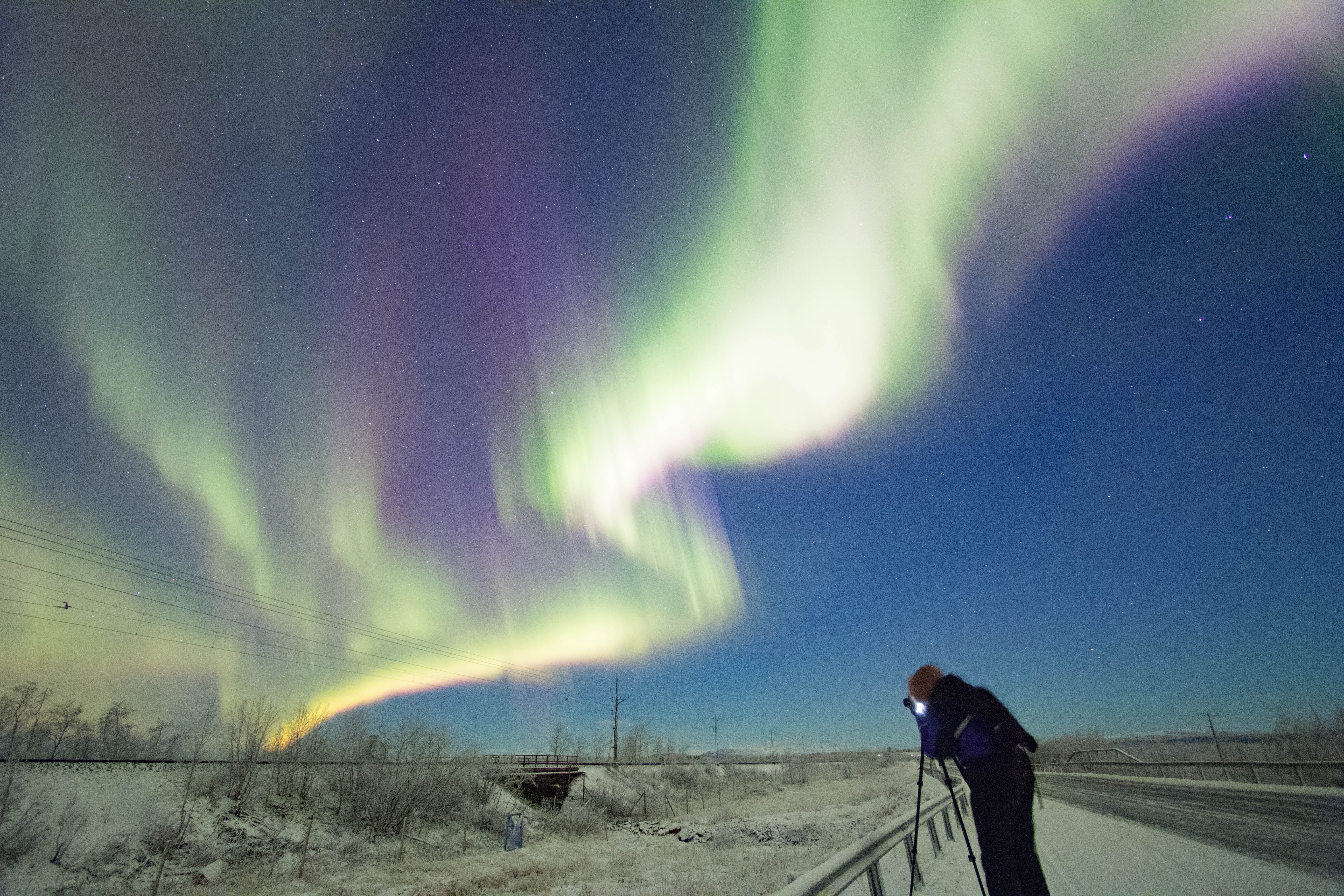
As ribbons of northern light drift above us, another aurora photographer arranges her next shot. The technique is not difficult and the results on the small camera screen reveal colors and textures beyond what we could see ourselves directly.
Kiruna Sweden
16 Nov 2015
EOS 60Da with EFS 10-22mm(10mm)
8 seconds, f/3.5, ISO 1600
previous | nightscapes index | next
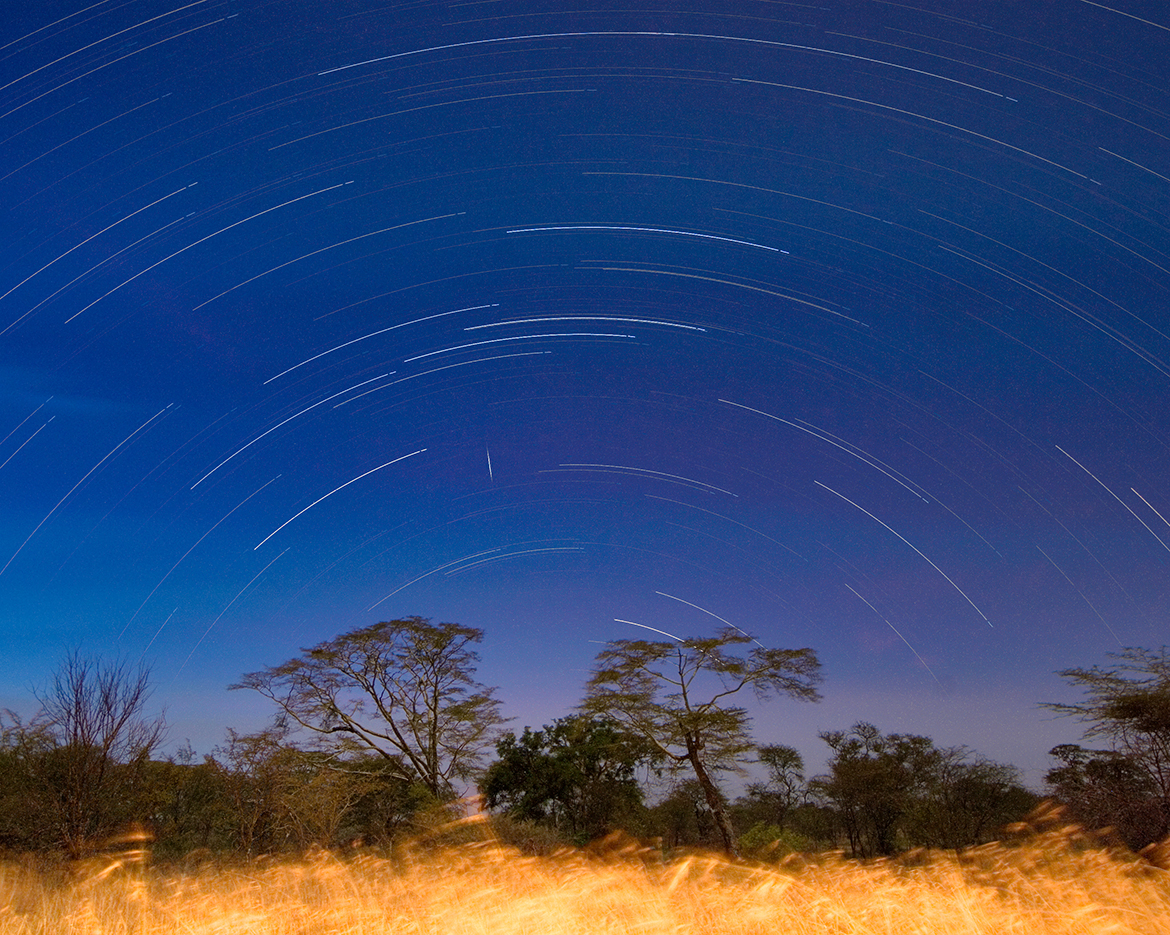
A safari in Tanzania takes one just south of the Earth’s equator. Here there is no visible North Star; it resides just below the horizon, obscured by the acacia trees and grasses of the Serengeti plain. A startrail image reveals its implicit location; the arcs to the north are perfect semicircles.
Serengeti National Park, Tanzania
14 June 2008
Canon EOS 30D, EF-S 10-22mm at 10mm
composite of 3-minute exposures at f/8, ISO 400
previous | nightscapes index | next
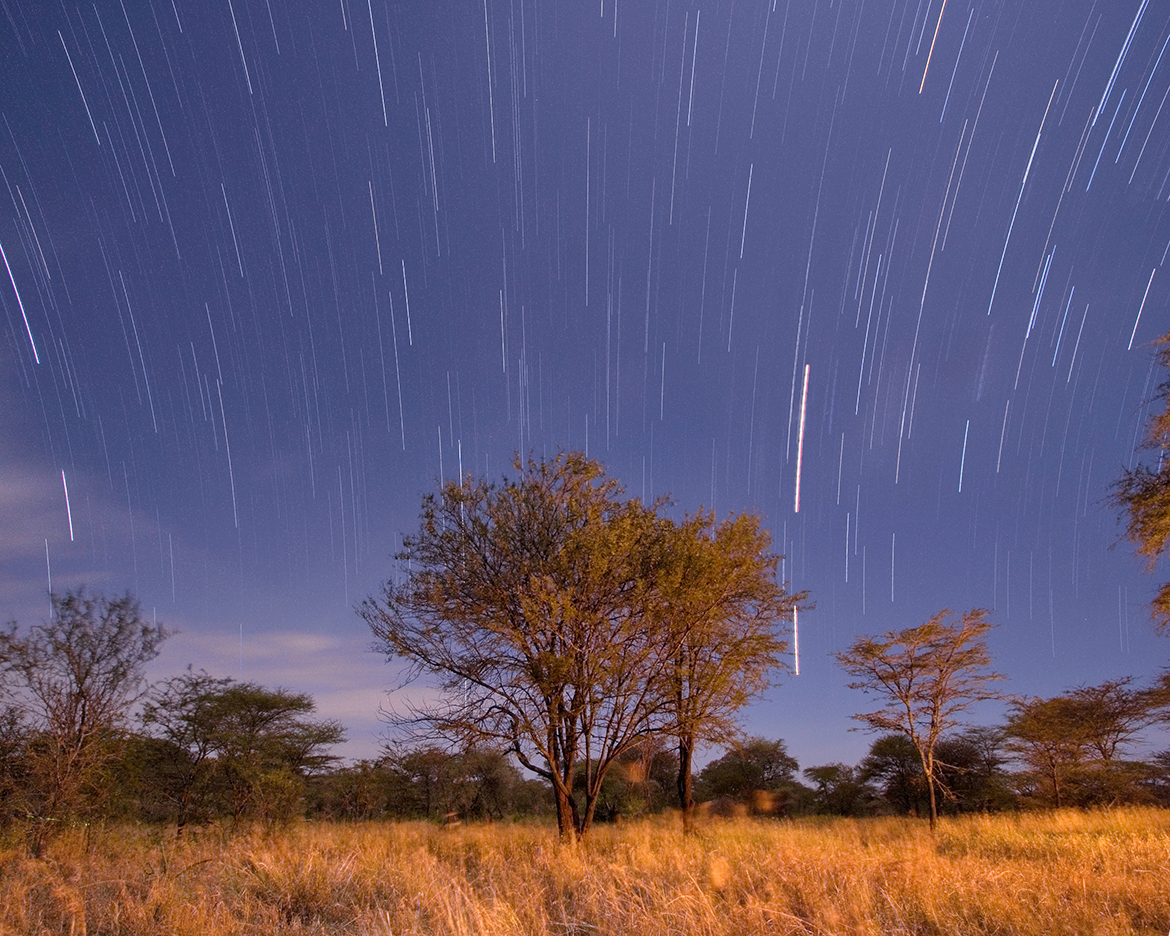
A safari in Tanzania takes one almost exactly to the Earth’s equator. A camera pointed east to make a startrail image will show those due-east stars taking paths perfectly perpendicular to the horizon. Stars to the north and south bend toward their respective centers of apparent motion.
Serengeti National Park, Tanzania
14 June 2008
Canon EOS 30D, EF-S 10-22mm at 10mm
composite of 3-minute exposures at f/6.7, ISO 400
previous | nightscapes index | next
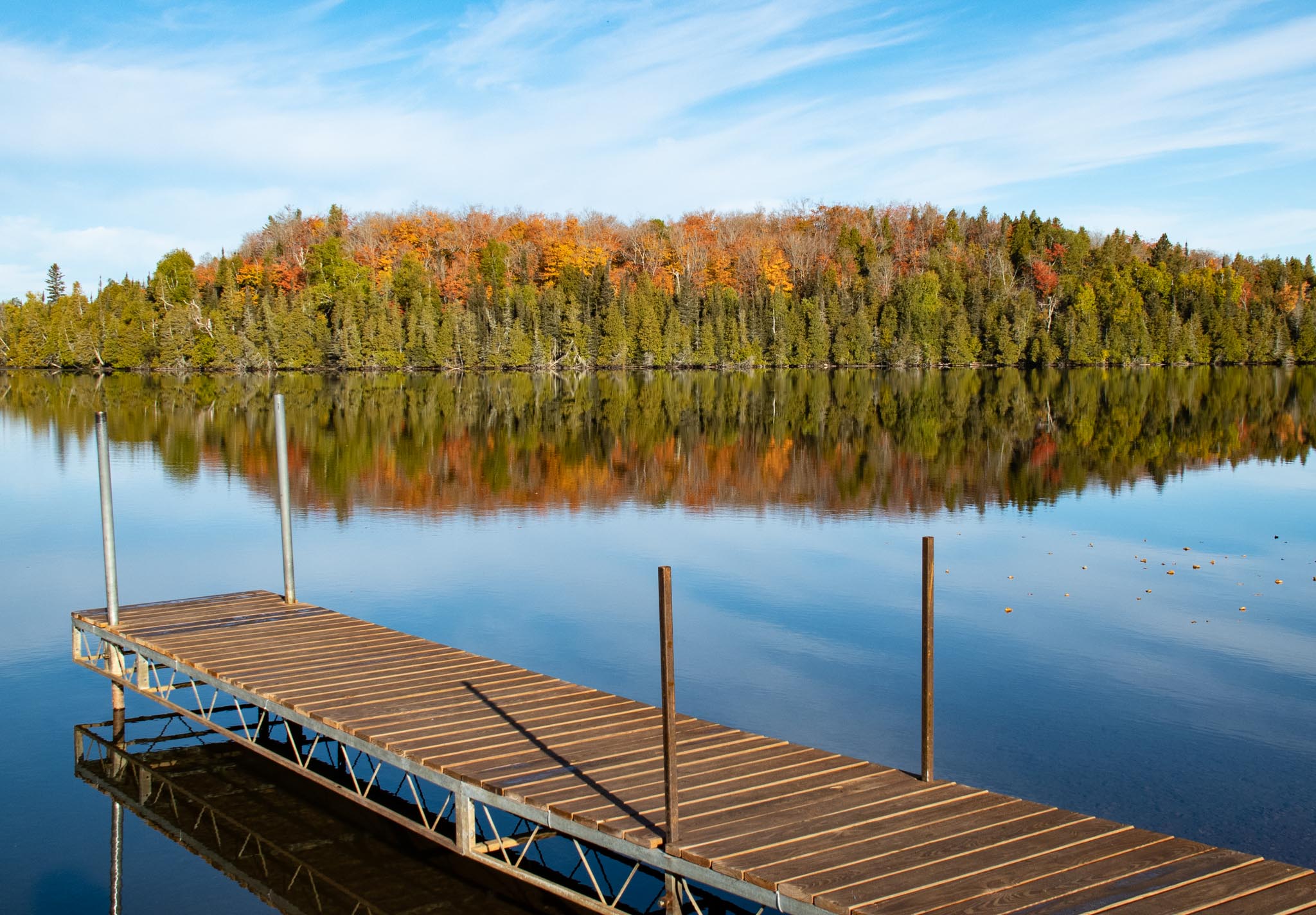
The climate is changing, and this year held examples of it, including heat and drought conditions that triggered forest fires. The major fires were in western states and Canada, but Minnesota had a share of them too—closing our boundary waters and forests for several weeks.
The fires are now under control, and northern Minnesota campgrounds are open again. We decided to take advantage of the calm weather, see the fall colors, and maybe even see some northern lights. Of course because camping next to a beautiful lake is just an invitation to take nighttime pictures of the sky above it, I continued my time lapse lessons.
Continue reading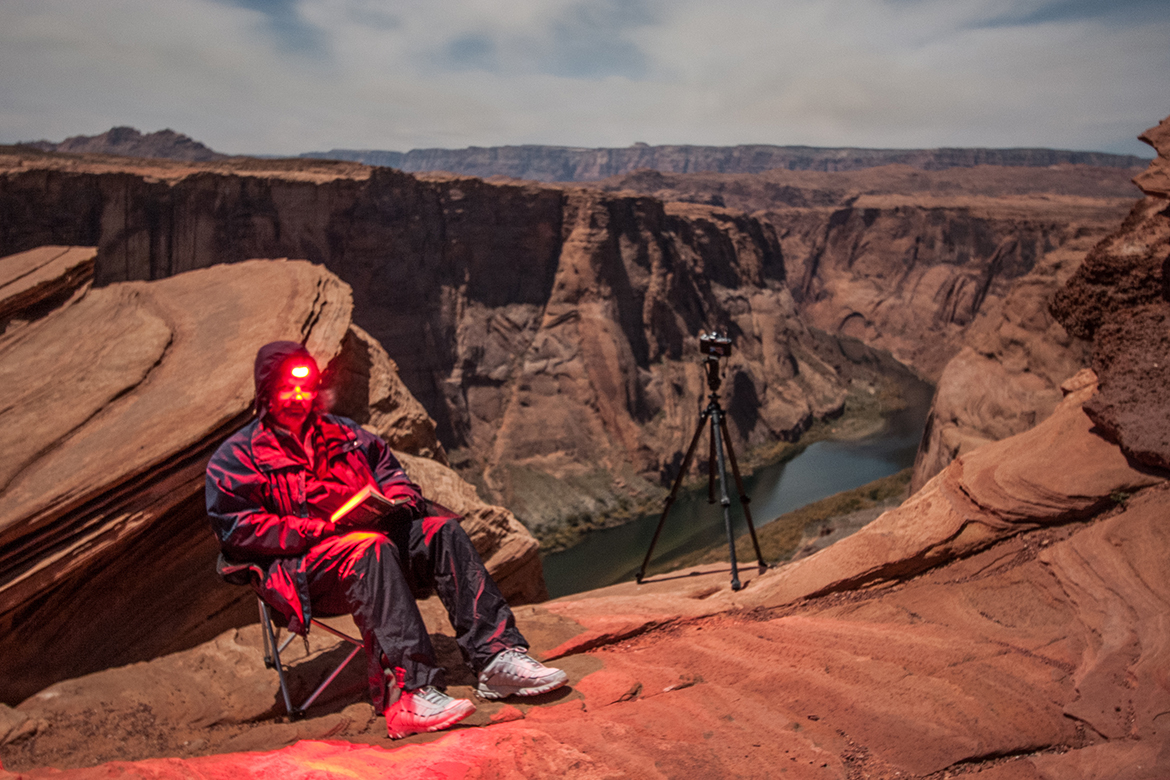
In 2006 I was given a travel tip by a coworker: there was a dramatic view of the Colorado River available to those willing to hike a half-mile to the canyon rim from a roadside rest area just south of Page, Arizona. While on a trip to the state, I searched for it and found the barely marked spot described by my friend, and then found hints of a lightly used footpath across a barren expanse of desert to a rocky crest that hid the sudden drop-off behind it.
It was indeed a grand view, and I returned that night with my camera to attempt some long exposure star trails. The conditions were not optimal: the moon was lighting the sky, but worse, clouds were interfering. Still, it was a beautiful setting and I have learned that unexpected results sometimes occur, so I stayed several hours to record whatever happened.
The results were not “stellar”, but the composition was strong enough that I include it among my nightscape favorites.
I have not had the opportunity to revisit that site until this year, when I looked forward to showing this hidden treasure to Poldi on our road trip through the area. As we traveled toward Page, the obscure rest area sign we were looking for had been replaced by huge billboards. I was stunned to find that the parking area, previously able to accommodate a dozen cars at most, now had a capacity for hundreds! And tour buses! There was an admission gate where fees were collected by multiple lanes of toll workers! Horseshoe Bend had been “Disneyfied”!
No longer was it a broken footpath to an exposed canyon ridge; a paved sidewalk had been installed to a fenced overlook, with benches at shade stations along the way. Hundreds of visitors flocked to the viewpoint and took selfies with the same backdrop I had used fifteen years earlier (before “selfie” was a word).
I flowed with the crowd, amazed at the transformation. I guess this is what happens at natural wonders as they become discovered and shared. And I guess it could be worse. It is part of the Glen Canyon National Recreation Area, administered by the National Park Service. For an example of “could be worse” look to Niagara Falls, the south bank managed by our NPS, preserving a beautiful park, but the northern Canadian side, with arguably a better visual vantage, is spoiled by unrestricted vendors catering to tourist sideshows and amusement parks.
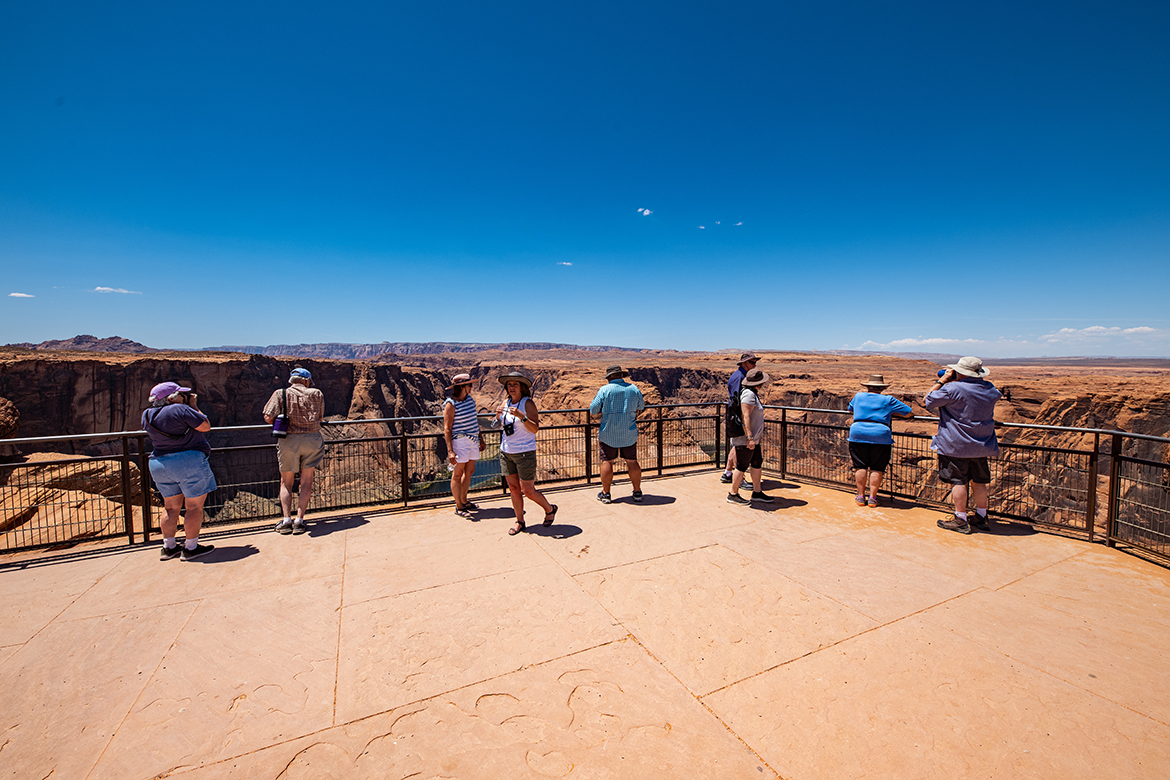
It is no longer possible to take the picture I made in 2006. The expansive parking lot, which overfills during the day, must be empty by sunset according to Page city ordinance (which owns the land outside the national recreation area). There is no easy access at night.
Although I feel like I have witnessed a historic change, a 15-year transition from patch of desert to parking lot is much less than a blink-of-an-eye in the geologic time scale that created this wonder. In another million years, I expect the parking lot and the fenced overlook will be condensed to just another narrow but colorful band among the sedimentary layers displayed along the canyon walls.